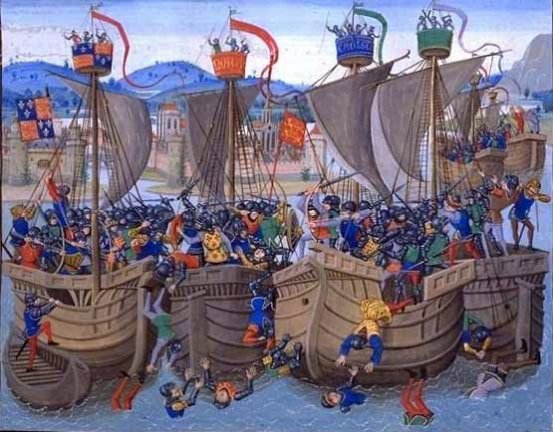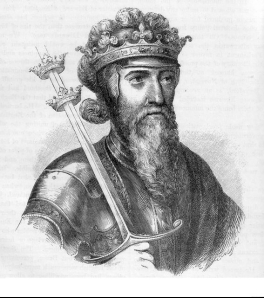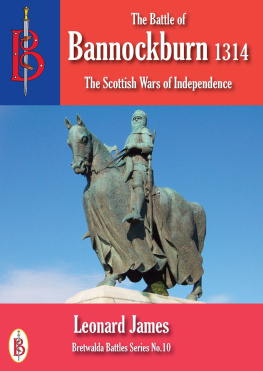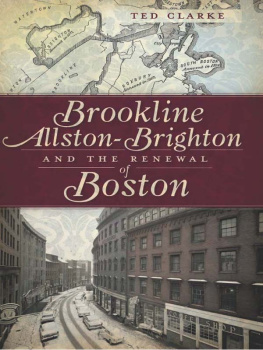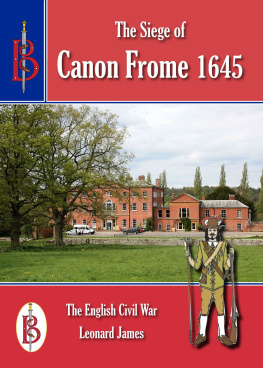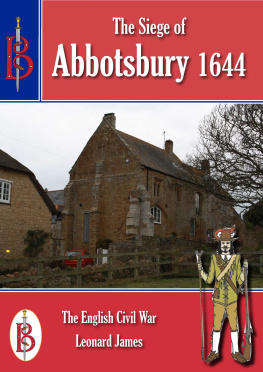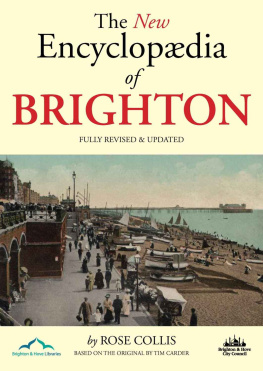Bretwalda Battles
The Hundred Years War
The Battle of Brighton 1377
by Leonard James
Published by Bretwalda Books
Website : Facebook : Twitter : Blog
This ebook is licensed for your personal enjoyment only. This ebook may not be re-sold or given away to other people. If you would like to share this book with another person, please purchase an additional copy for each person. If you're reading this book and did not purchase it, or it was not purchased for your use only, then please purchase your own copy. Thank you for respecting the hard work of this author.
First Published 2014
Copyright Leonard James
Leonard James asserts his moral rights to be regarded as the author of this work.
ISB N 978-1-910440-19-3
Contents
The 100 Years War
By the time the French landed at Brighton to loot, kill and rape, the Hundred Years War was already 40 years old and had claimed tens of thousands of lives. The war would rage on for generations after Brighton, laying waste large areas of France, claiming vast numbers of lives and leaving a legacy of bitterness between the two nations that has never really gone away. The Battle fought just outside Brighton in June 1377 was one of the rare occasions when the war spilled over on to English soil, but it was nonetheless savage for that.
The Hundred Years War is usually treated by historians as a dynastic one between the royal houses of England and France. That is true so far as it goes, but lurking behind the dynastic claims were economic and trade disputes that embraced not only England and France, but also much of Europe. It was those wider disputes that brought the war to Brighton in the summer of 1377.
The first pitched battle of the 100 Years War was the English naval victory at Sluys which gave the English control of the Channel for a generation. The English wool trade to the Low Countries could continue largely unaffected by the war.
As the 13th century turned into the 14th the trade routes of Europe were undergoing dramatic strategic changes that were related to new forms of transport and to novel ways of doing business that remain familiar today. In the 1160s merchants in several towns around the Baltic established the Hanseatic League. The league worked to promote trade and to lower taxes and tariffs so that they could make more money for themselves. The key driver in the Hanseatic League was the cog, a new type of ship that could cope with the rough seas of the Baltic, North and Irish Seas while carrying larger amounts of cargo than earlier types of ship.
By the 1330s the Hanseatic League had expanded to include not only nearly every port around the Baltic, but also those around the North Sea and English Channel. The Hansa warehouses in London were along what is now Upper Thames Street just west of London Bridge in the heart of the City of London.
It was in the Low Countries that the extensive trade networks of the Hanseatic League met those of the Cloth Fairs that were held at cities and towns across France and parts of Germany. These attracted merchants from most of Western and Southern Europe. By the 1320s merchant ships from as far afield as Italy were sailing direct to the Low Countries bringing huge cargoes of spices and silks from the East as well as other products from the Mediterranean.
All this trading was revolutionised in the Low Countries by innovative ways of doing business. In about the 1270 merchants in Bruges invented what we know today as the limited company. Instead of trading with their own money, and risking personal bankruptcy if things went wrong, they pooled some of their money into a trading venture that had a separate legal identity. This venture then made profits to be shared out, or losses to be bourne, by the merchants who had put money into the venture to start with. This exciting and flexible arrangement made it possible to take risks jointly, allowing merchants to embark on voyages, ventures and deals that no one man could ever have contemplated. In 1309 the Bourse was founded as a place where shares in these ventures could be bought and sold - effectively the worlds first stock exchange. The worlds first modern banks were also founded to fund the new mercantile activity. By 1320 Bruges and surrounding towns had become economic powerhouses.
All this happened under the control of successive Counts of Flanders who took a great interest in the new forms of business and sought to find ways to tax them without destroying them. In this the Counts of Flanders were highly unusual in Europe. Most medieval monarchs drew their wealth from land and agriculture. They viewed merchants, particularly wealthy ones, as dreadful upstarts with money far above their social status and saw them only as targets to tax or plunder.
The Counts of Flanders had a vague and dangerously ambivalent status. They had been subjects of the Frankish Empire, but since the 11th century had owed a nominal allegiance to the Kings of France, while enjoying wide rights of self government. So long as Flanders was an impoverished swamp the Kings of France did not seek to exercise their nominal overlordship, but as Flanders grew rich the French kings regarded the region with greedy eyes.
The growing business boom in the Low Countries centred on the cloth trade, and particularly on wool. Raw wool was brought into the Low Countries, processed into a wide variety of cloths of different colours and finishes, then exported again. The main sources of wool were England and Spain, while the markets for cloth embraced most of Western Europe.
The fact that by the 1320s most of Englands foreign trade was in the form of wool to Flanders made the Kings of England view events in Flanders with great interest. The increasing friction between the Count of Flanders and his overlord, the King of France, thus became of importance to the Kings of England.
King Edward III of England in a 19th century engraving. The two crowns on his sword symbolise his rule of England and his claim to be King of France. Although historians often treat the 100 Years War as one fought for purely dynastic reasons, there were economic disputes and rivalries that underpinned much of the trouble between England and France in the 14th Century.
They were also of dynastic interest. The men who were Kings of England were also Dukes of Aquitaine and Dukes of Gascony. All of these lands, and others, were part of the Kingdom of France. This meant that the King of England, as Duke of Aquitaine, was a subject of the King of France just as was the Count of Flanders. Efforts by the King of France to impose his rule and taxes on the Count of Flanders was thus of real interest to the King of England since his lands in Aquitaine, and elsewhere, might be the next to feel the sting of French taxes and rules. To complicate matters still further the Kings of England were descended from the Dukes of Normandy and Counts of Anjou and still had claims to those regions of France, although the French kings did not recognise those claims. Such defunct claims could, however, be useful bargaining chips and cropped up in the increasingly fraught diplomatic moves between France and England.



